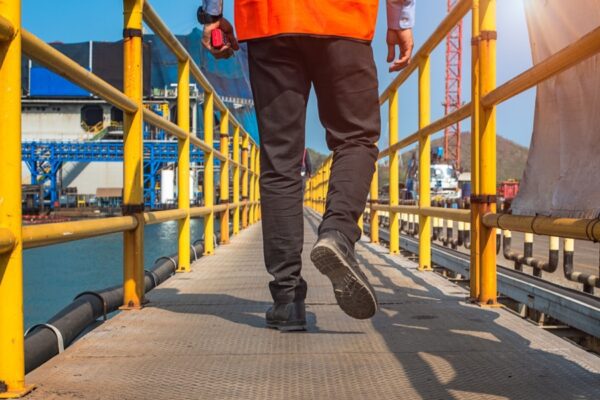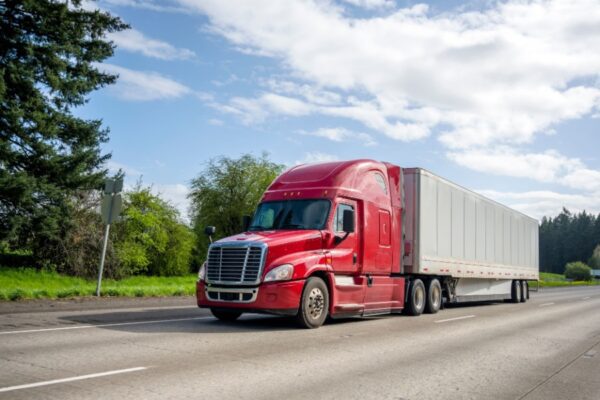Slips, trips and falls are responsible for many industrial accidents and accidental deaths in the workplace. Paying close attention to the areas where we walk and work to eliminate the potential for slips, trips or falls is essential to the success of our business.
On the job, there can be many different types of slip, trip and fall hazards. For instance, debris on the floor is just as hazardous as cords or hoses lying in walking areas. In addition, materials stored improperly present spill hazards, causing slips. Being aware of these hazards and addressing them is the first step to avoiding slip, trip and fall injuries at the workplace.
What other types of situations do we need to look out for? Here is a brief list of some of the common hazards seen frequently in working areas:
- Cords lying in aisles or other walking areas
- Water, oil, lubricants or other liquids spilled on the floor
- Materials (pallets, boxes, etc.) stored in a walking area
- Materials stored on stairs
- Poor lighting in walking or working areas
- Poorly marked pedestrian or machine traffic only paths
Cords and Hoses
One of the biggest trip and electrical hazards comes from cords and hoses—both are common in working areas. First, cords and hoses call for caution in walking areas because they pose trip hazards. Second, cords and hoses require monitoring to prevent damage. Cords with broken insulation pose electrical shock and fire hazards.
Use extra caution when working with extension cords. Only use extension cords on a temporary basis. “Temporary” means only using the cord when you need additional power for a short period, such as when operating a power tool. Extension cords are not a substitute for permanent wiring. Extension cords wrapped around poles, taped down to the floor or look like they have been in the same place for a long period of time are not being used on a temporary basis and are likely being used as a substitute for permanent wiring. This use creates both trip and electrical hazards. Look in your work area and see where extension cords are in use. Report any misuse to your supervisor immediately to prevent trip, fall and electrical hazards in your area.
Material Storage in Working Areas
Look around your work area and consider how materials are stored. Look specifically at pallets, carts, trays and other material handling or material holding equipment to see if the way it is stored creates a hazard.
Pallets should not be stored on end because they are not stable in that position. They can easily tip over onto workers or equipment. Storing boxed materials properly will prevent slips, trips and falls. Cardboard boxes are combustible and should not be stored near hot surfaces. It is also important to never store boxes in front of electrical panels. Always think about where material is stored and how it may create a trip hazard or ignite because of materials around it.
Stacking materials in work areas is unavoidable, but can also create hazards if materials are not stacked properly. It is important to avoid stacking boxes too high to avoid tip-over hazards. In addition, heavier boxes should not be stored on top of lighter boxes for the same reason. Whatever materials are needed in your work area, stacking them properly will help prevent tip or trip hazards.
Aisles and Passageways
Both workers and motorized vehicles utilize aisles and passageways. Combining pedestrians with motorized vehicles can be dangerous when there is a lack of attention to safety procedure. When walking anywhere in the workplace, be mindful of where you are and what traffic is in the area. Get in the habit of looking over your shoulder and looking both ways before crossing an aisle, or approaching an intersection. If you are operating a powered industrial truck, slow down at intersections and sound the horn when you approach blind areas. If powered industrial trucks are in your area and unattended, be careful about where you step so you do not trip over forks and other equipment that is on the ground.
Keeping Your Area Free From Hazards
Some of the most serious safety hazards found in walking or working areas are due to poor housekeeping. As you look at your work area, keep the following issues in mind:
- Sweep floors and work areas so dust and debris do not accumulate and create a trip or slip hazard.
- Clean up spilled materials immediately.
- Do not let trash overflow in work areas.
- Do not store materials in aisles or passageways.
- Always be mindful of powered industrial truck operations. As a pedestrian, watch for truck traffic. As an operator, always be aware of workers in the area.
- Never store materials on the stairs.
Always Remember…
Walking and working surfaces can cause many different and serious injuries when safety precautions are not followed. The more we pay attention to the hazards in our work area, the better chance we have at preventing injuries and keeping ourselves safe and healthy on the job.
Material posted on this website is for informational purposes only and does not constitute a legal opinion or medical advice. Contact your legal representative or medical professional for information specific to your legal or medical needs.



